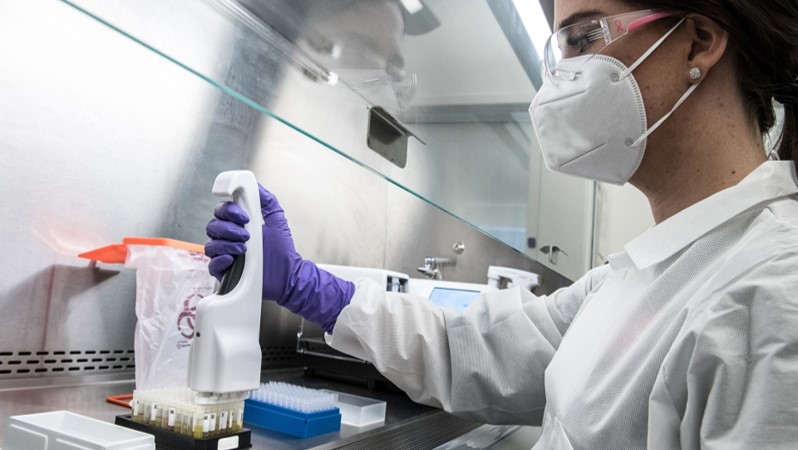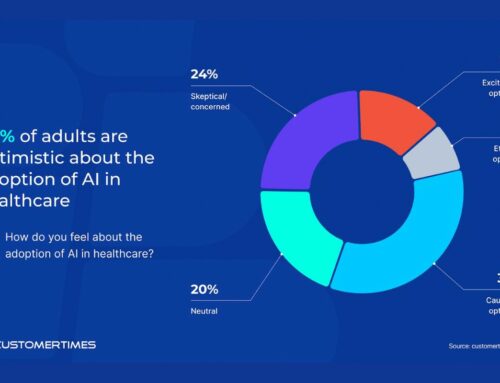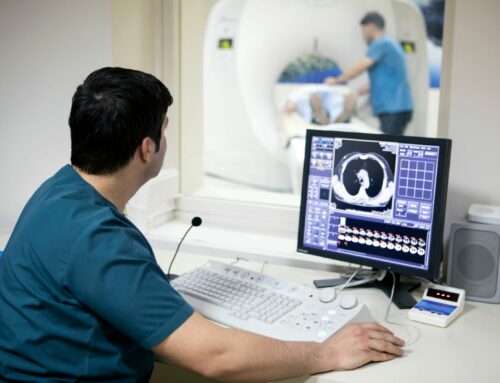By Theo deVos, Senior Vice President, Corporate Development and Operations at Ares Genetics, an OpGen Group Company |

Infectious diseases can be unpredictable in how they present and are transmitted, and in how the causative microbes can rapidly evolve by mutation. This is a familiar concept for researchers who are focused on the genetics of antimicrobial resistance in these disease states and one that has gained new awareness in the general public during the COVID-19 pandemic, as a result of the continued emergence of new variants such as Delta and Omicron. While we continue to fight COVID, there is another serious long-term threat to public health on the rise: the rapidly expanding ‘silent pandemic’ of antimicrobial resistance (AMR). Based on 2019 data, it was estimated that 4.95 million deaths were associated with AMR, and 1.27 million deaths were directly attributed to drug-resistant bacterial or fungal infections. This crisis stems from overuse and misuse of antibiotics, both in hospitals and outpatient settings, coupled with a depleted pipeline of reliable frontline antibiotics to treat common infections like those found in the urinary tract, respiratory system or blood stream. One consequence is the rise in outbreaks of antibiotic resistant infections in hospitals or other health care settings.
When facing infectious disease outbreaks, access to appropriate data and analytical tools is essential for healthcare workers to make data-driven and well-informed decisions for the management of their patients. However, when facilities lack the appropriate platforms and data management and reporting tools, clinicians and researchers are unable to identify emerging threats in real-time. In many instances, lack of readily available and intelligent diagnostic and treatment information can delay appropriate interventions, prolonging individual patient cases and, by extension, the entire outbreak.
When pathogens develop resistance to antibiotics that clinicians rely on, the infections become harder to treat, increasing the risk of severe illness for the patient, including the potential for death. With limited treatment options, there is also an increased potential spread of the disease and increased cost burden on our healthcare systems. To address these challenges, we need to arm clinicians and facilities with reliable tools that measure and monitor the prevalence and trends in resistance, transmission and treatment outcomes. To achieve this will require innovative tools and AI-powered, predictive platforms that deliver real-time predictions and alerts for ongoing antimicrobial stewardship, infection prevention and infection control, and surveillance of public health threats.
A crucial step in this effort is to enhance the awareness among clinicians and laboratory managers of the benefits of whole genome sequencing (WGS) analysis and reliable interpretation of resistance profiles and genetic information. In recent studies, next generation sequencing (NGS) workflows have been shown to correctly identify antibiotic resistance markers with >95% sensitivity and >99% specificity and identify pathogens correctly with 100% sensitivity. Many clinical microbiology labs have access to WGS platforms, and as research continues to validate WGS as a tool for interpreting infectious disease information we can expect their use and adoption to increase.
Boosting Accuracy in Prevention of AMR with Whole Genome Sequencing
Whole genome sequencing is rapidly gaining acceptance and transforming the approaches to combatting AMR threats. It offers a significant advantage for microbial typing and AMR surveillance based on the unparalleled level of data that it provides, which in turn can have an important impact on outbreak investigations and diagnosis and treatment of infections. WGS provides the resolution necessary not only for species identification, but also for subtyping to discover related isolates, enabling an understanding of bacterial transmission patterns and characterization of outbreaks based on antimicrobial resistance profiles or strain clusters. These approaches and strategies can help inform the design and implementation of preventive measures to get ahead of future outbreaks, as well as guiding antibiotic treatment decisions when applied in healthcare settings.
Leveraging Short- and Long-Read Sequencing
High-throughput sequencing techniques include second-generation (short-read) and third-generation (long-read) sequencing methods. Both short-read sequencing and long-read sequencing have their own unique advantages, depending on the intended application. Short-read or second-generation sequencing technologies involve massively parallel sequencing of short reads, whereby millions of individual sequencing reactions occur simultaneously, and the DNA fragment data is assembled by comparison with reference sequences.
Two of the most common commercially available short-read sequencing platforms are offered by Illumina and Thermo Fisher Scientific. The Illumina platform is widely used across all next generation sequencing (NGS) applications, including clinical microbiology. Illumina sequencing uses reversible dye terminator technology to detect the sequence of DNA molecules. As many computational tools are designed for short-read data mining, and there is a large installed base and well-established use of these tools, short-read sequencing by Illumina is the current standard in this field. However, short-read sequencing technologies depend on complex library preparation, and require long run times, often in excess of 24 hours, which are challenges that can be solved with the third generation or long read sequencing approaches.
Long-read or third-generation sequencing technologies use flow cells that contain nanometer sized pores (nanopores) through which the sequence of individual DNA strands is determined either by fluorescence (Pacific BioSciences – PacBio), or electrochemistry (Oxford Nanopore – ONT). Long-read sequencing technologies can generate individual sequences that exceed ten thousand bases which improves results for repetitive regions of the genome where assembly is difficult with short-read methods. Furthermore, while short-read methods have been recognized for their accuracy, the accuracy of long-read methods is constantly improving, and it provides additional advantages in terms cost of capital equipment and the potential for near-real time analysis with short turnaround times.
Taking Action with Artificial Intelligence Insights
As sequencing technologies transform laboratories, the availability and application of cloud-based databases and bioinformatics tools for real-time annotation, interpretation and prediction of AMR determinants are essential to antimicrobial stewardship and infection prevention strategies to combat the increasing threat of AMR.
Cloud-based data platforms are on the cutting edge of these efforts and give healthcare workers access to tens of thousands of isolate sequences and antimicrobial susceptibility (AST) data. Pairing the insights in these ‘sequence to report’ platforms with annotated information gathered from public health databases creates a powerful analytic tool that empowers researchers and healthcare workers to better address outbreaks and understand infectious disease trends. As the digital health and data management industries evolve, these platforms must be made more accessible to clinical microbiology laboratories.
Overall, cloud-based interpretation platforms can provide a validated interpretation and reporting pipeline for the vast majority of all current sequencing systems, found both in clinical and research settings. Current interpretation applications focus on sequencing from bacterial isolates, but future iterations of these technologies could enable fast, comprehensive and culture-independent diagnostics from native patient samples. Across the board, these platforms are more informative, more comprehensive and much faster than culture-based methods. Broader adoption of these platforms and the consequent access to better informed diagnostic and predictive information in the fight against infectious diseases and drug-resistant superbugs could lead to reduced hospital-stay times and improved outcomes for patients as well as offering the potential for significant cost savings for healthcare facilities and patients.
 About The Author
About The Author
Theo deVos is Senior Vice President, Corporate Development and Operations at Ares Genetics, an OpGen Group Company, developing DNA-based infectious disease products and services for drug response prediction to improve the way antimicrobial resistant (AMR) infections are diagnosed, prevented or treated.












